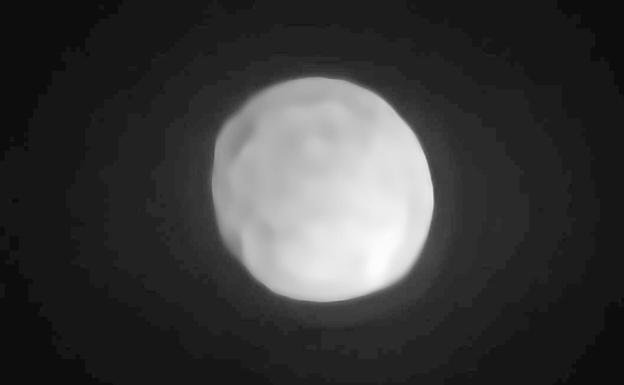Hygiea The smallest dwarf planet?

Fuente
There is still debate about the classification of dwarf planets, a term created in 2006 by the International Astronomical Union (IAU) that snatched Pluto's place as the 9th planet of our solar system and that was inaugurated with 3 celestial bodies, the previous one named that has a size of 2370 kilometers, 80 more than previously estimated, according to data provided by the New Horizons probe in 2015, Ceres which is located in the asteroid belt and was discovered in 1801 who has a diameter of 945 kilometers and Eris, discovered in January 2005 which has a size of 2326 kms and was also known by the name of Xena..
At the time of the new classification many maintained that this object was larger than Pluto and that it was the possible planet X that had been speculated about, and that it was the largest object in the belt, but both were later discarded since it is 67 astronomical units from the sun, outside the field occupied by the sun..
The Kuiper belt, a stellar disk at a distance between 30 and 55 astronomical units from the sun, named after Gerard Kuiper who in 1951 predicted its location 41 years before modern astronomical devices could discover it..
More than 800 objects ranging from 100 to 1,000 kilometers have been observed in this place and many astronomers have assured that both Pluto and its satellite Charon belong to this group..

Source](https://nosolosputniks.wordpress.com/planetas-enanos/)
In order of size the following dwarf planets that appear to meet the requirements are Sedna, Orcus and Quaoar, followed by hundreds or thousands of others that have been under investigation and appear to meet the required conditions.
So far Ceres is the only object considered a dwarf planet in the asteroid belt that lies between Tuesday and Jupiter, many consider that this group of rocks that form these asteroids are the remains of a planet that was destroyed by an internal explosion or the impact of a comet, however in 2019 a team of astronomers has proposed that Hygiea or Higia the fourth asteroid in size of the group should be considered a planet, as observations made by them have shown that it has all the characteristics to be so.
These conditions are: it orbits the sun, it is not a moon of some planet or non-stellar body, it has not cleared its orbit of other objects, and it has sufficient mass so that its gravity forces it to adopt a spherical shape.

Source
The latter is what has been confirmed by observations made by several astronomers from the Atacama Desert in Chile, using a modern optical instrument called Sphere, a set of four telescopes of 8.2 meters each..
Thanks to this study, it was also possible to determine that the size of the asteroid is 430 kms and that it does not have any impact crater, as scientists had previously claimed..
The object discovered in 1849 by Annibale de Gasparis of carbonaceous composition whose rotation time is 27 hours, 37 minutes and named after the Greek goddess of health, could go from being the ninth asteroid in terms of size classification to being the smallest dwarf planet, if the arguments are accepted by the IAU, although the IAU still does not give an answer, even though years have passed, about Sedna, Orcus and Quaoar, something that has annoyed many astronomers, including those who claim that Pluto should be returned to its original status as a planet..
 :
https://es.wikipedia.org/wiki/Anexo:Asteroides_(1)-(1000)#Asteroides_del_(1)_al_(100)
https://es.wikipedia.org/wiki/(10)_Hygiea